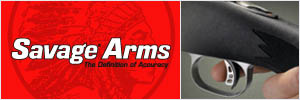


Jack O'Connor and the .323 Super Snorter
Objectivity is a scare commodity in the realm of gun writing. Few have achieved any sort of balance over the decades. Few writers have had the notions of "suitability" and "adequacy" in mind coupled with observation, experience, and common sense to go along with it.
Of those that have come and gone, the level of forthrightness and reasonableness achieved by the late Jack O'Connor, the "Dean of American Gun Writers," has yet to be exceeded. Though showing respect for experience, Mr. O'Connor realized that "experience can be deep but narrow." When evaluating firearms (and other equipment) for a particular hunting purpose, his focus was invariably on usability and effectiveness rather than formulas and numbers. Jack O'Connor was a master at confusing the issue with common sense.
Though closely associated with the .270 Winchester, O'Connor happily wrote that the performance difference between it, the .280 Remington and the .284 Winchester is imaginary. He praised the .30-06 and .375 H & H with equal ease, and paid tribute to the .30-30.
Offering a dose of reality that should be self-evident, Mr. O'Connor long ago remarked that "the pounds-feet business is just as unrealistic as the kinetic energy business." Further, after decades of using them, Jack O'Connor wrote of his taking grizzly, zebra, kudu, sable, and elk: "If there is any difference on such animals between the 130 grain and 150 grain .270 bullets and the 180 grain .30-06 bullet, I have yet to detect it." From 35 pound gazelles to 1500 lb. moose and eland, O'Connor noted surprising little difference in killing power. This was predicated on good shot placement and a bullet that expanded yet gave adequate penetration.
No brief article can possibly hope to adequately cover rifle, cartridge, and bullet selection for all types of game. This one sure doesn't. Nor can it possibly convey the life's prose of Mr. O'Connor. I can say, however, that there is no hunting author that has given us more valuable reading.
The common thread that runs though the O'Connor era, the O'Connor hunts, and the O'Connor experiences is a very basic one. The importance is not one of a specific caliber or rifle, but more of our individual competency with it. For virtually all big game hunting, unless we are trying for a stunt of some sort, any number of commonly available, commonly adequate, commonly suitable combinations are at our fingertips.
To greatly champion a .30-06 over a .270, a .300 Magnum over a 7mm Magnum, or a .325 WSM over a .300 Win. Mag. is taking extreme liberties with both history and reality. To believe that a .220 Swift or a .223 WSSM is the big-game hunting equal of any of these cartridges requires a special level of wishful thinking.
There is often an emotional bond between us and the equipment we use, and even the equipment that we simply own, that automatically compels us to attempt to justify what cannot possibly be defended on the basis of terminal ballistics or empirical studies. To the extent that it amuses us, entertains us, or just offers more suitable choices, fine. But when we distort physics, promise results that are more vaporware than reality, it is appalling.
Jack O'Connor gets smarter every year. Ernest Miller Hemingway was probably not paying tribute to Jack O'Connor when he penned the following words, but he easily could have been:
"There
are some things which cannot be learned quickly and time, which is all
we have, must be paid heavily for their acquiring. They are the very simplest
things and because it takes a man's life to know them, the little new
that each man gets from life is very costly and the only heritage he has
to leave."
Copyright 2006 by Randy Wakeman. All Rights Reserved.

Custom Search


